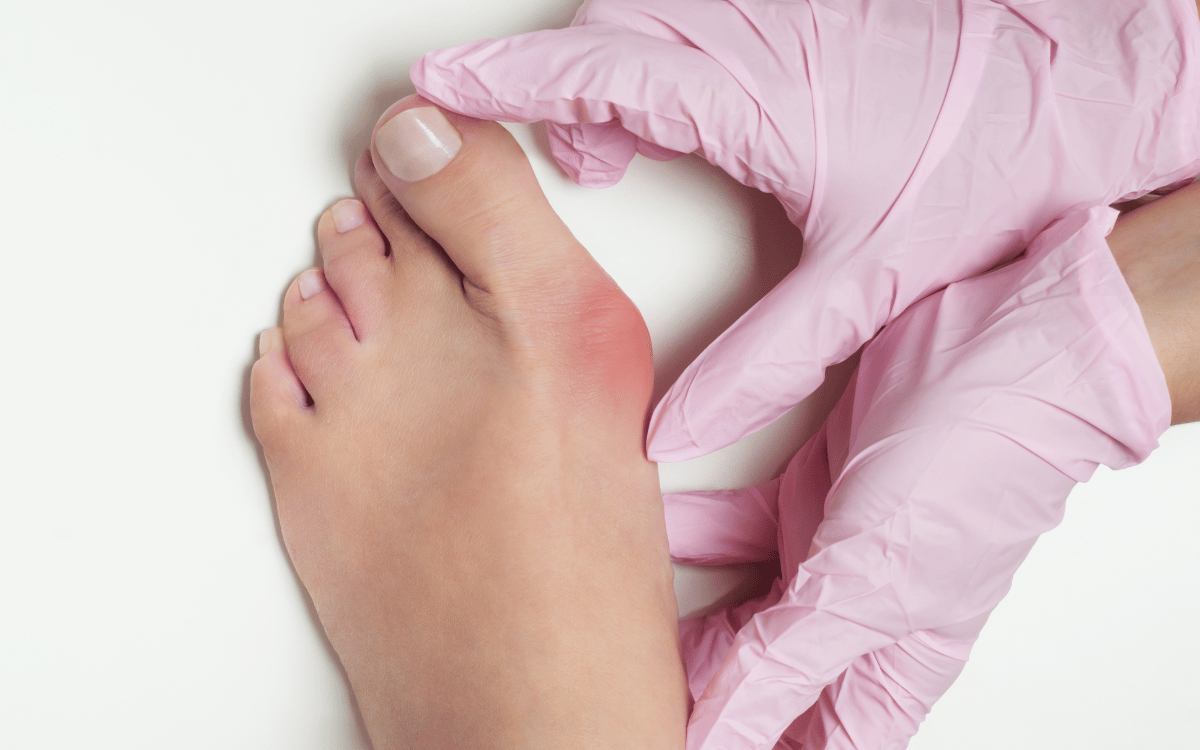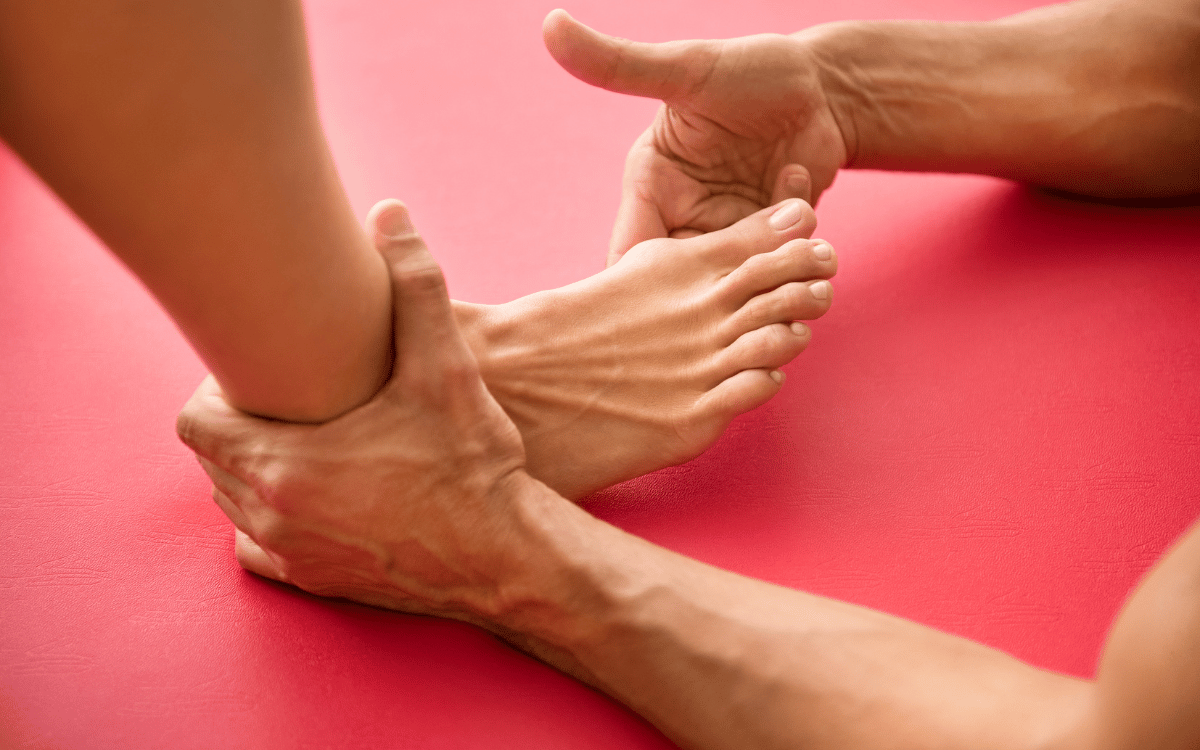Hallux Abducto Varus—or ‘bunions’—is one of the most common issues we treat at Sydney Foot Solutions. The biggest misconception is that the only way to straighten the big toe is surgery. Not true. We can reduce bunions effectively—and comparatively cheaply—without causing pain or a change to footwear or lifestyle.
Bunions: an all too common podiatry problem
Foot pain from bunions affects over 30% of the Australian population. Bunions are the swelling and misalignment where the hallux bone joins the metatarsal—essentially where your big toe joins your mid-foot. While the jury is still out on definitive cause of bunions, we do know they are exacerbated by prolonged wearing of shoes that are too tight and have too high a heel.
Meet Linda, 61: A patient with a classic case of bunions
Linda had moderate bunions bilaterally (the big toe turned inwards), who endured foot pain for years, adjusting her footwear to accommodate the excessive deviation. Linda responded to one of our ads with the goal to avoid painful and expensive surgery and remain active. Complicating Linda’s case, she was also suffering from osteoarthritis in her big toe joint, which is not uncommon in older patients.
We factor in patients goals to our medical assessment
Linda was pleasantly surprised when we discussed that we could actually straighten the big toe and reduce her bunions, without her sacrificing high heels or general activity. Linda was already wearing sensible footwear on most occasions, but wanted the option to wear heels should she choose to.
After establishing Linda’s personal goals, we medically accessed her case during our initial assessment, which included an X-ray. We decided a course of foot mobilisation podiatry in conjunction with strengthening exercises was the best option. (We have included the two main strengthening exercises at the end of this blog.)
Our podiatry treatment showed improvement within a month
To her credit Linda was enthusiastic with both appointments and exercises. We noticed a reduction in her bunions within four weeks of commencing treatment. During that time Linda commented that she could see her “big toe straightening.”
In Linda’s case, the first five weeks were the most intense aspect of the treatment, with a reduction in frequency after that. The course of treatment is highly dependent upon the patient’s individual characteristics. We can make a good forecast during our initial consultation, for the low cost of $35.
Mission accomplished: No more foot pain, no more bunions
We finished the corrective phase of Linda’s treatment, and sent her for a follow up X-ray. During this review Linda mentioned “I didn’t realise how much foot pain I was experiencing before I had this treatment, it was just something I lived with. But I was thinking the other day how nice it is not to have pain in my feet anymore.” Upon measuring the difference between Linda’s angles of the deviation at the big toe (bunion), we straightened the left toe by 7 and the right by 8. The great news is that with minimal ongoing treatment we will be able to further straighten the bunion till there is no deviation whatsoever.
Well done Linda! No need for expensive surgery, or a change to your footwear!
Strengthening Exercises
Here are two strengthening exercises that help correct bunions. Note, we strongly encourage these in conjuction with foot mobilisation therapy in our clinc to achieve better, longer lasting results.
Heel Raise (Foot Extension)
Why do this exercise? This exercise helps to strengthen the muscles around the joints adjusted by the practitioner. The stronger these muscles are the longer your adjustments will hold.
How to do this exercise:
- Stand with your feet comfortably apart.
- Come onto the balls of your feet about 3/4 as high as you can go.
How often? Hold for 3 seconds, times 10 sets, twice daily
—
Toe Crunch (Foot Inversion)
Why do this exercise? To strengthen the muscles at the bottom of your feet so that your adjustments hold in place for longer.
How to do this exercise:
- Stand with your feet hip width apart.
- Roll your ankles out so that your weight is on the outside of your foot and you big toe is off the ground.
- Curl your toes like you’re making a fist with them.
How often? Hold for 3 seconds, times 10 sets, twice daily
NOTE: If you experience cramp ease off to the point where cramp disappears.
—
Sydney Foot Solutions – Your Sydney Podiatrist
Bunions, osteoarthritis, foot pain, and heel pain need not control your life. Sydney Foot Solutions is a Sydney podiatry clinic that specialises in foot mobilisation podiatry and acupuncture for the treatment of a wide range of foot pain, heel pain, biomechanical and body movement issues. Assessment and treatment techniques combine a mixture of mainstream podiatry treatments with foot mobilisation and acupuncture, allowing a holistic approach to treating your foot pain.
Call today for an appointment on (02) 8966 9300.









